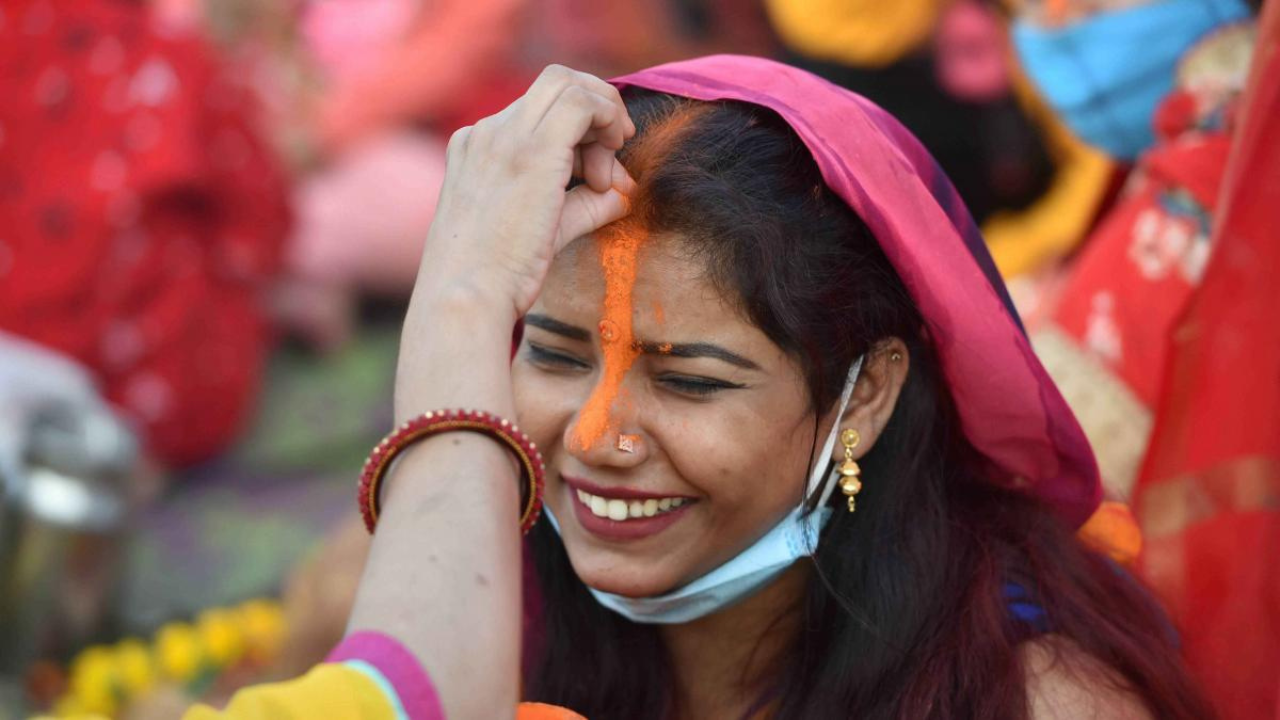 English
English

In this four-day festival dedicated to the Sun and Chhathi Maiyā, married women apply a vivid orange sindoor line from nose to hair-parting, but what does this striking mark mean, how did it originate and why only orange in this special observance?

The long sindoor line from nose to forehead symbolises the Sun’s red-hue.
New Delhi: Chhath Puja is an ancient Hindu festival primarily observed by communities in Bihar, Jharkhand, eastern Uttar Pradesh and parts of West Bengal. On this occasion devotees worship Surya Dev (Sun-God) and Chhathi Maiyā (believed to be his sister) for health, prosperity and well-being of the family.
According to some traditions, the festival’s roots go back to the return of Lord Rama and Sita to Ayodhya after exile, when people observed fasts and offered thanks to the Sun. The fast and offering rituals became formalised into the Chhath sequence.
For 2025, the four-day schedule is as follows:
A distinctive sight during Chhath is married women applying a long streak of sindoor (vermillion) from the nose tip up through the forehead to the hair-parting.

Chhath Puja 2025 runs from October 25 to 28.
While most married Hindu women daily apply red sindoor, during Chhath the choice is typically orange. Here’s why:
Beyond personal ritual, the sindoor application and other Chhath observances emphasise family unity, marital harmony, and community purity. By fasting, offering arghya, standing in water during sunset and sunrise, devotees express gratitude, self-discipline and connection to nature.
Moreover, the festival fosters a sense of regional identity in Bihar, Jharkhand and eastern UP, as well as among diaspora communities.
When you next see women during Chhath Puja sporting a bright orange line of sindoor from the nose to forehead, know that this is far more than decorative. It is a powerful symbol: rooted in solar devotion, marital aspirations, community values and ancient beliefs. The colour, the length of the line, the timing—all carry meaning.